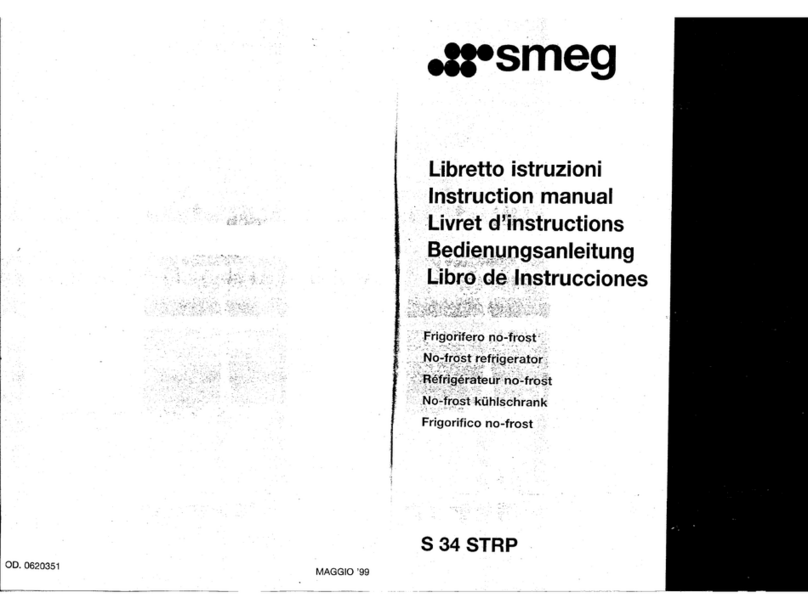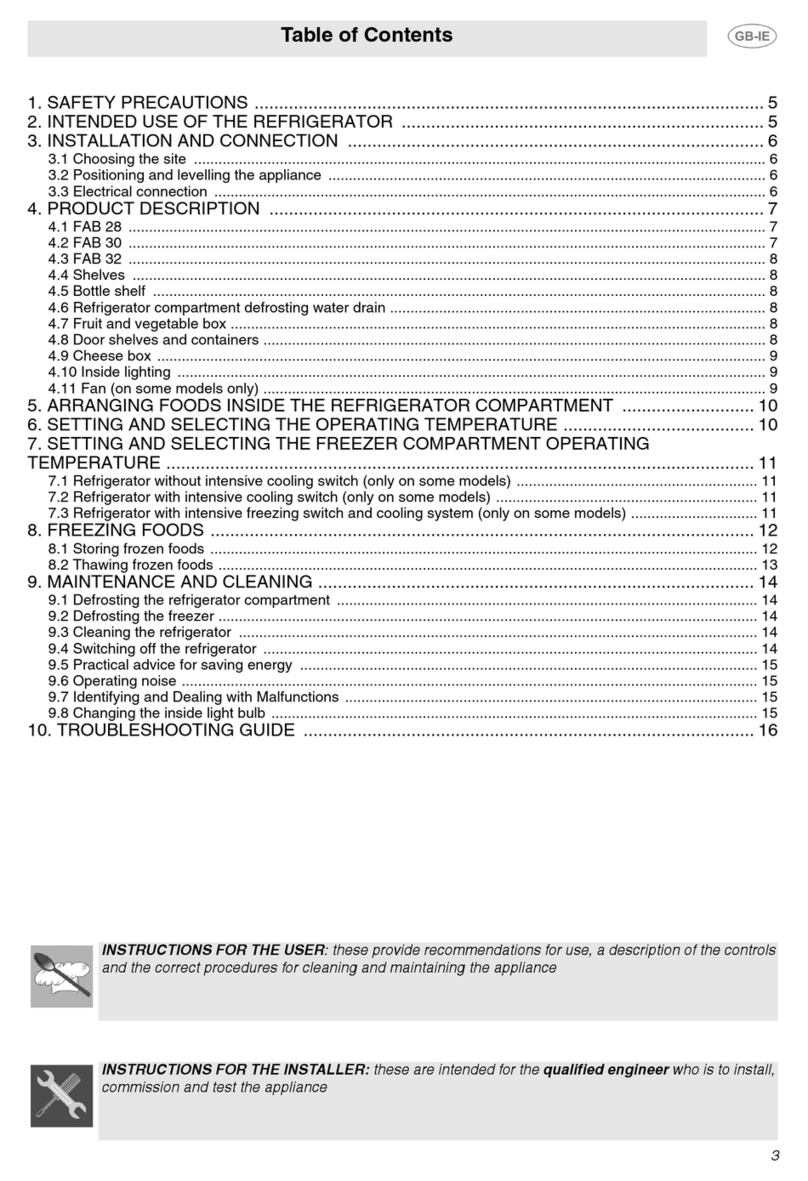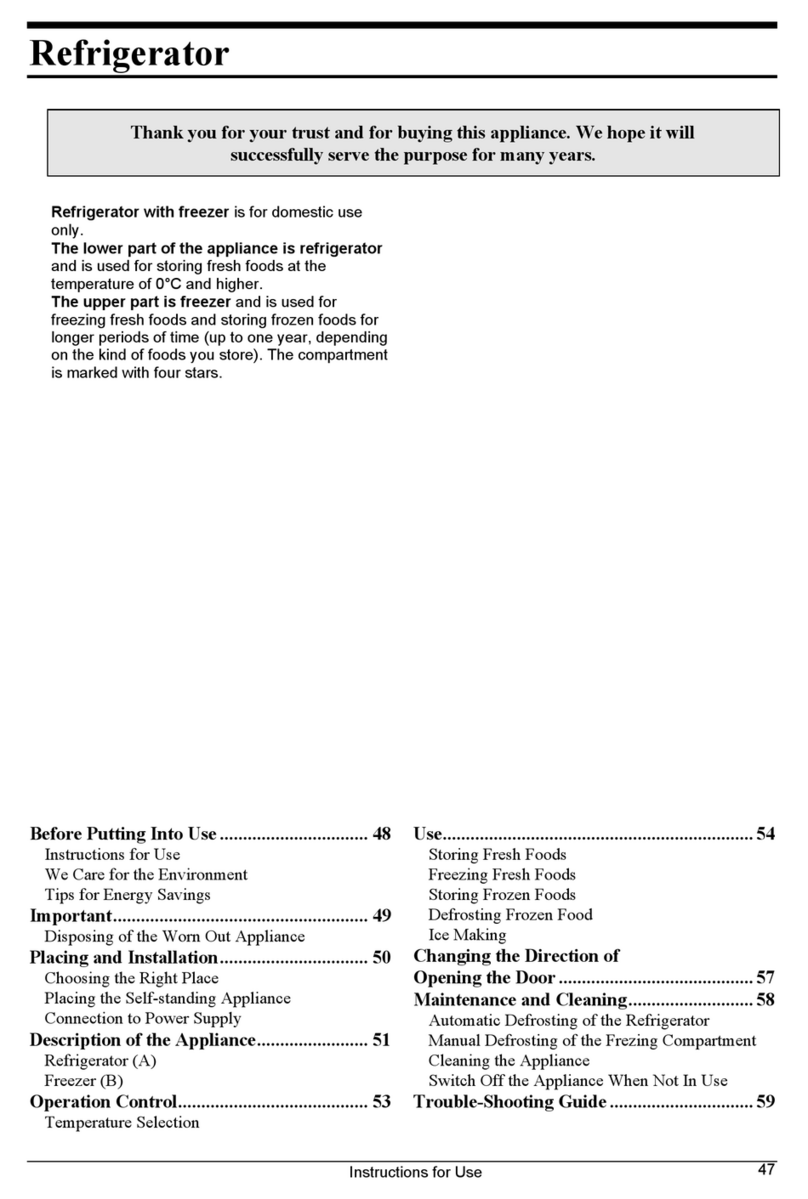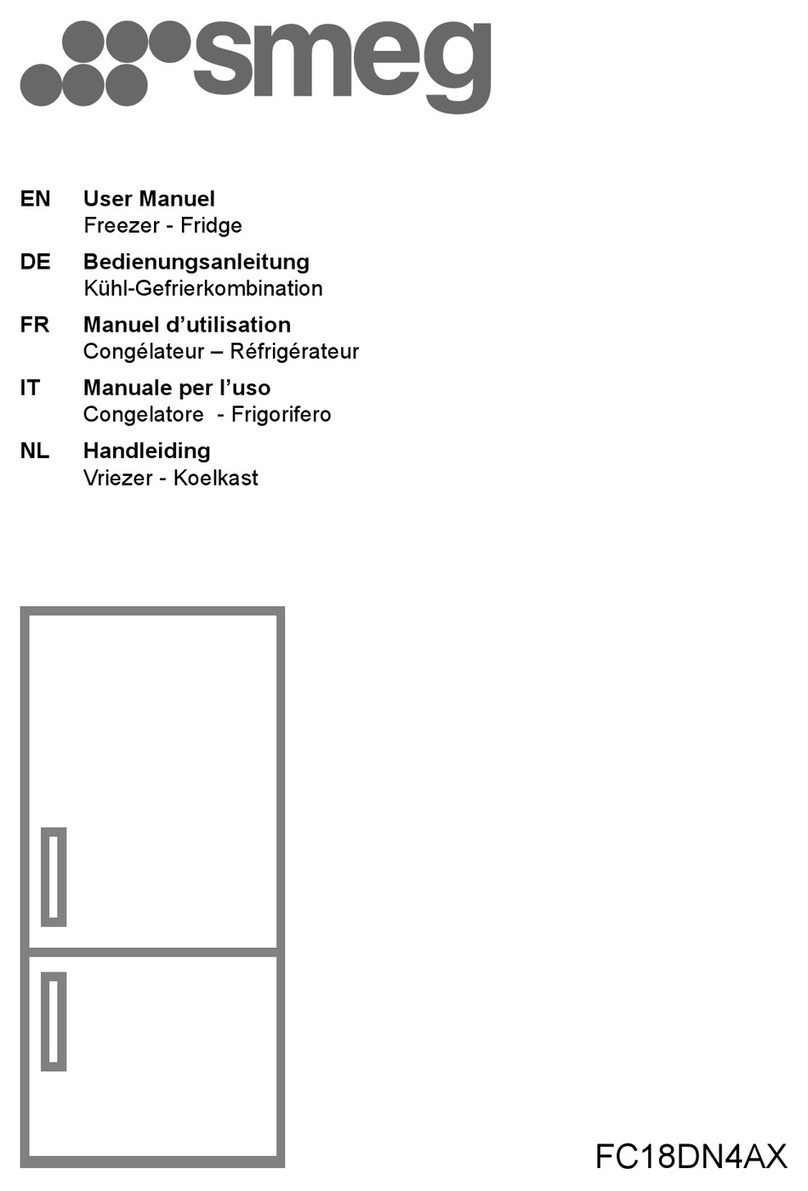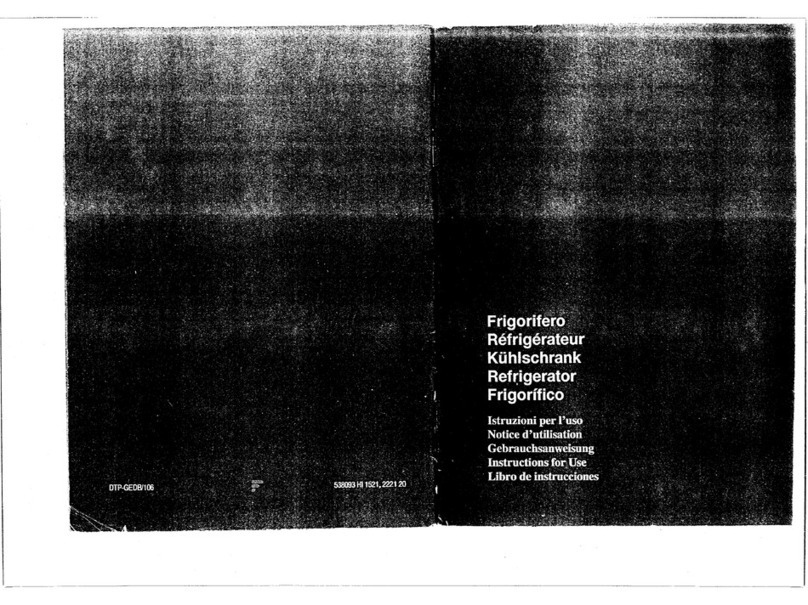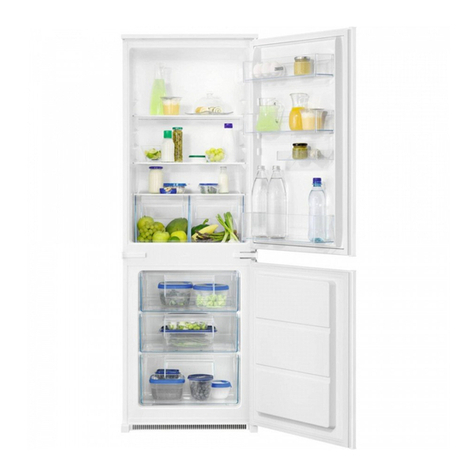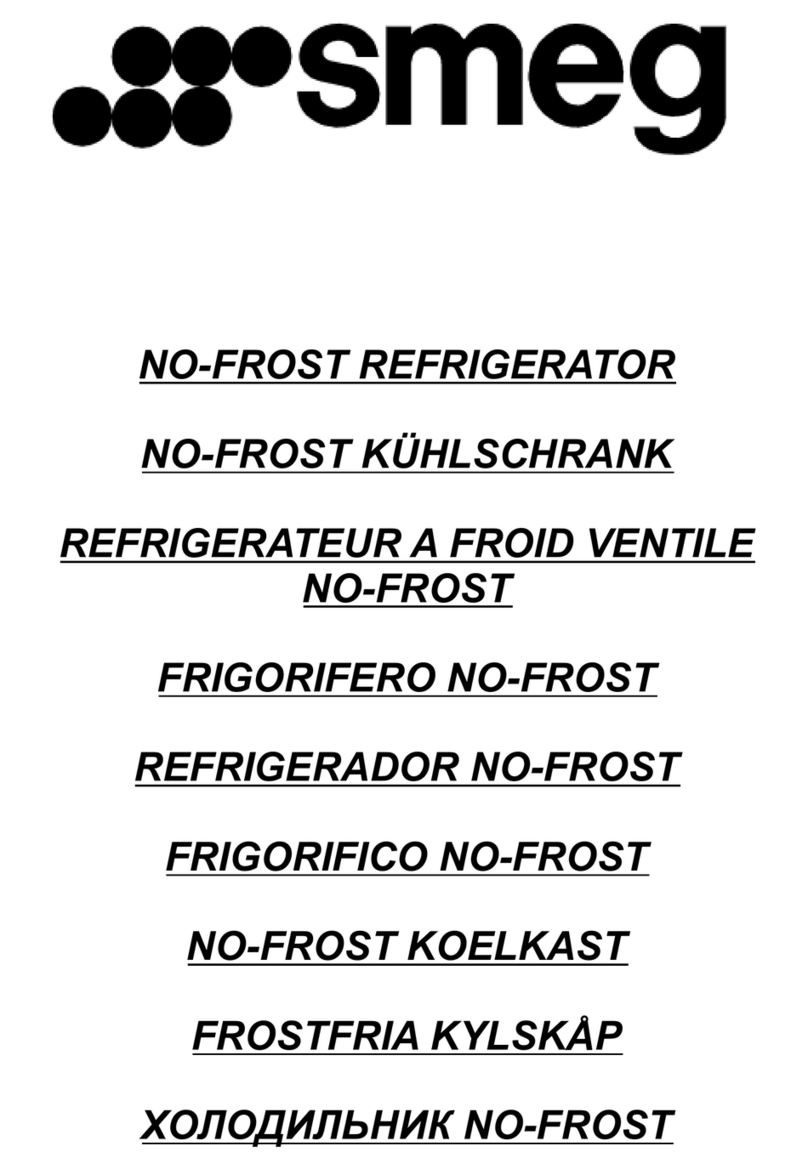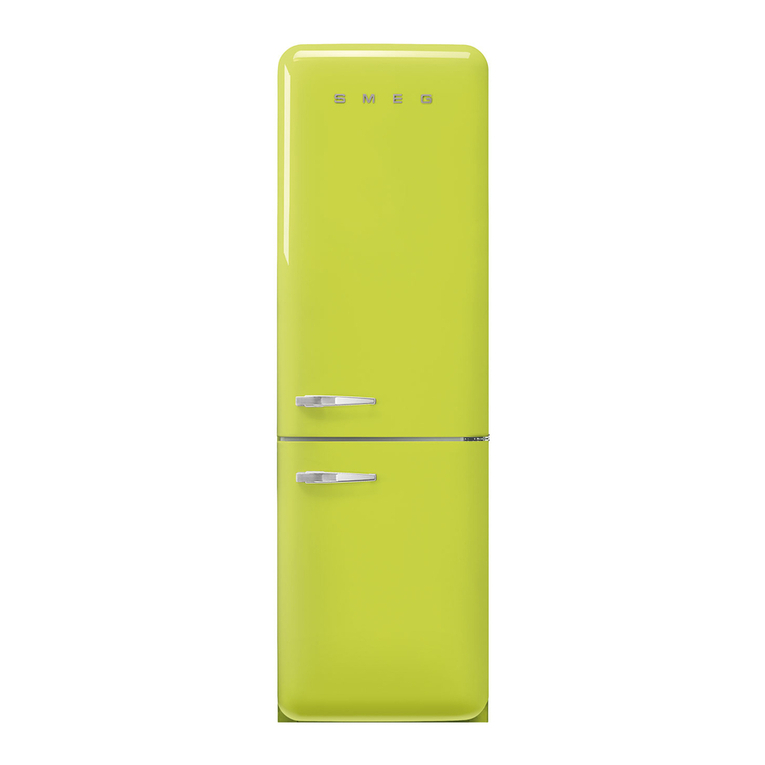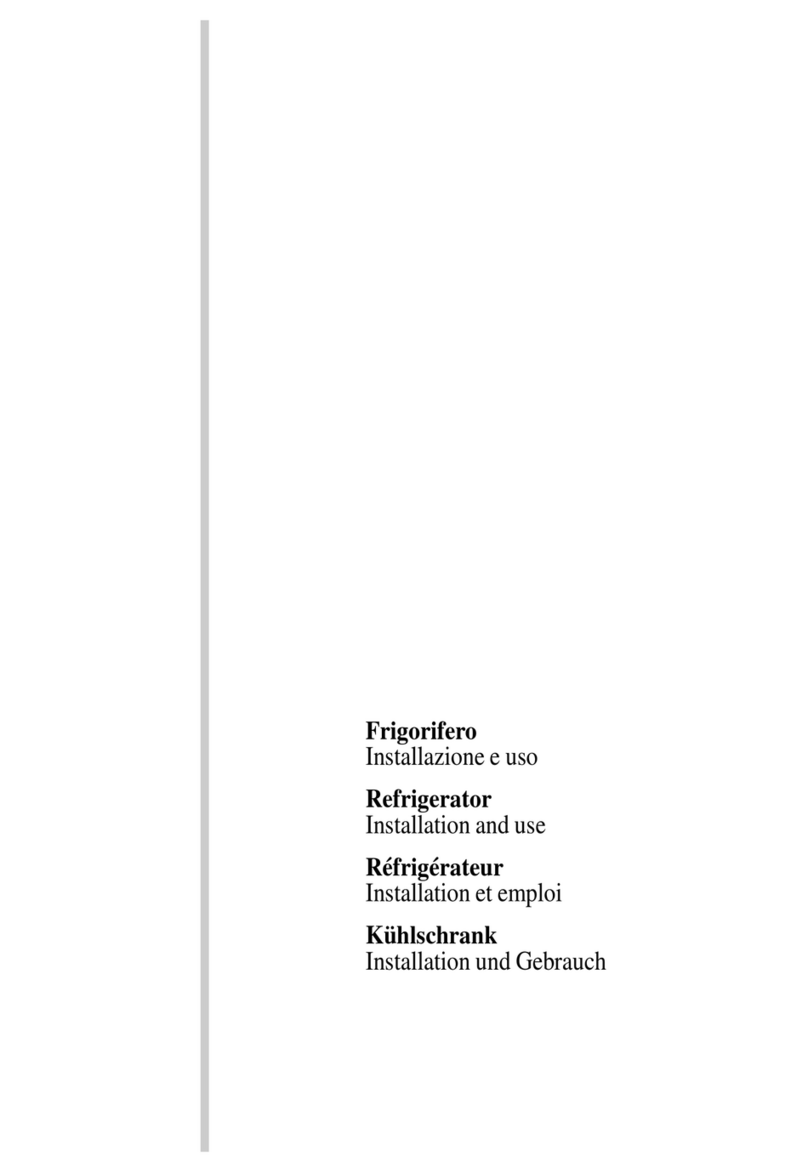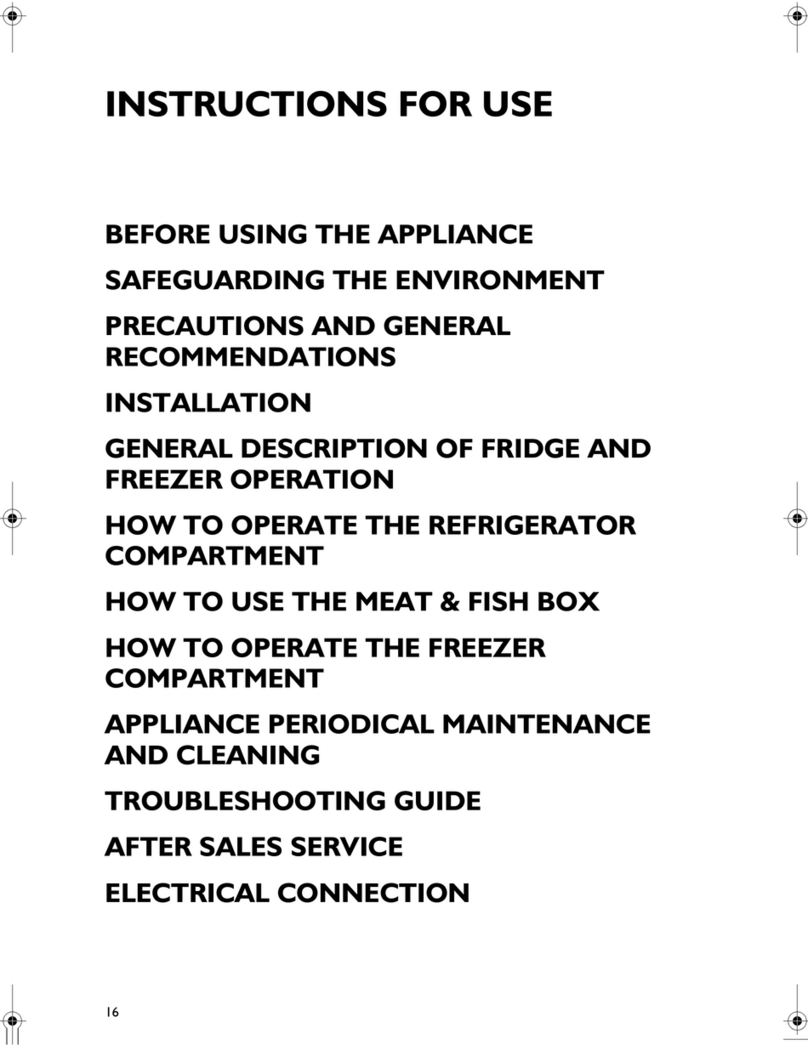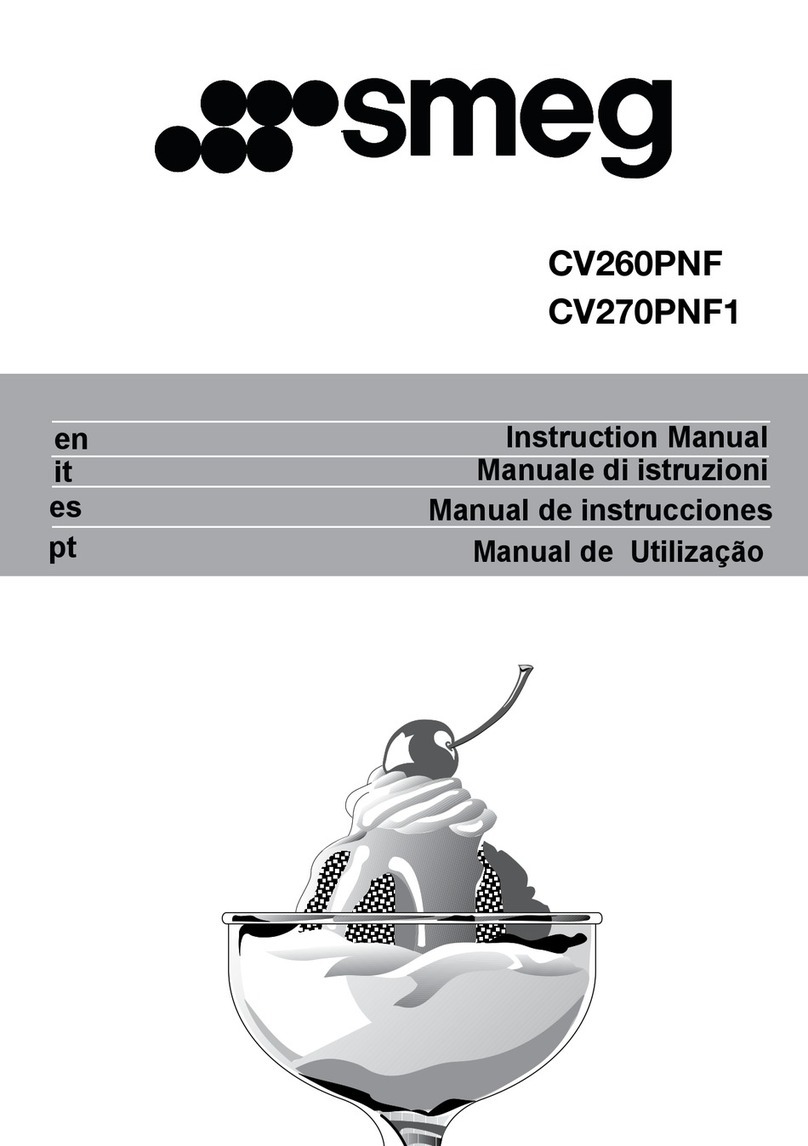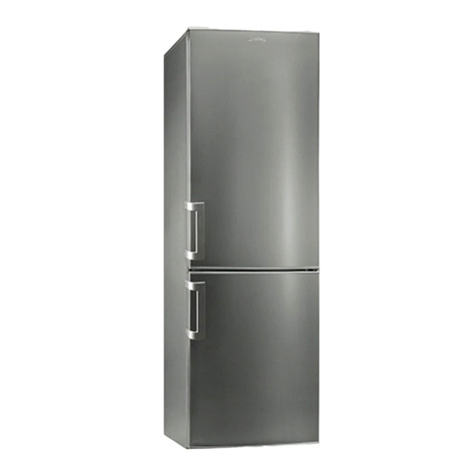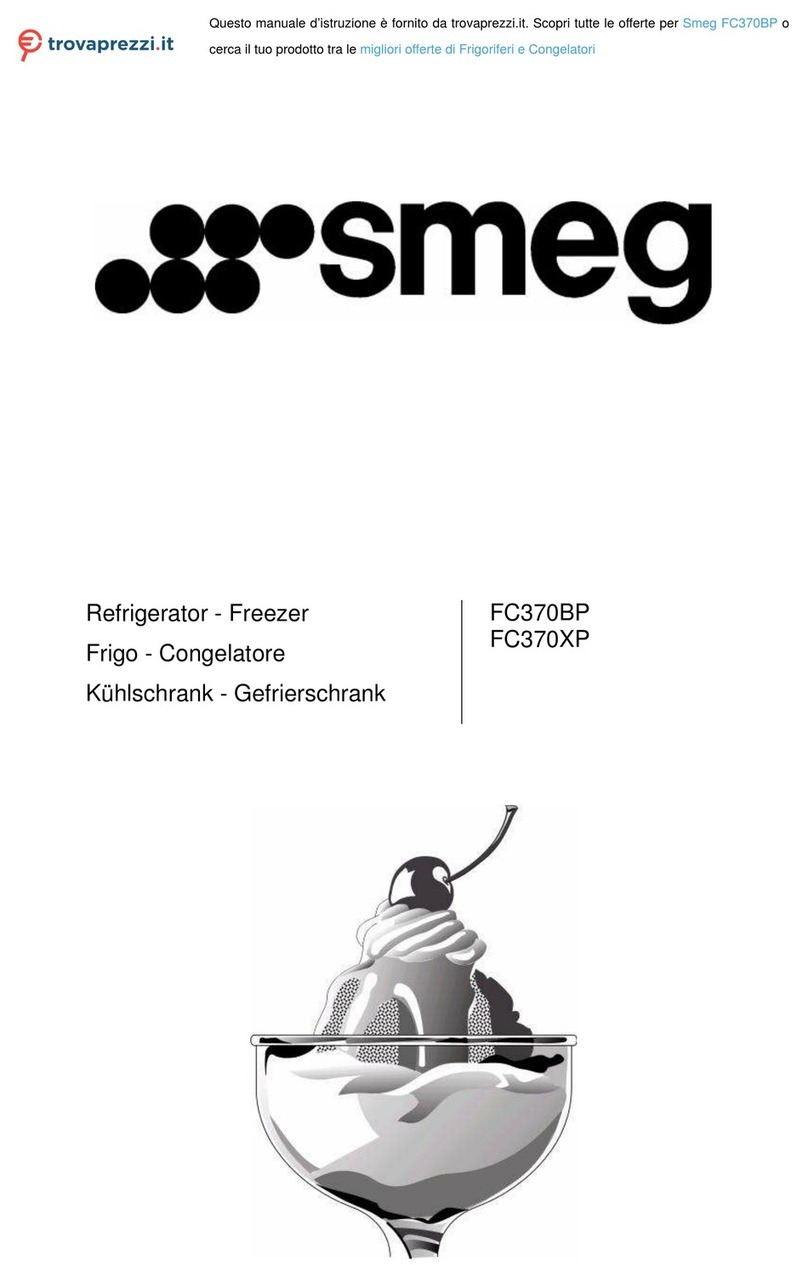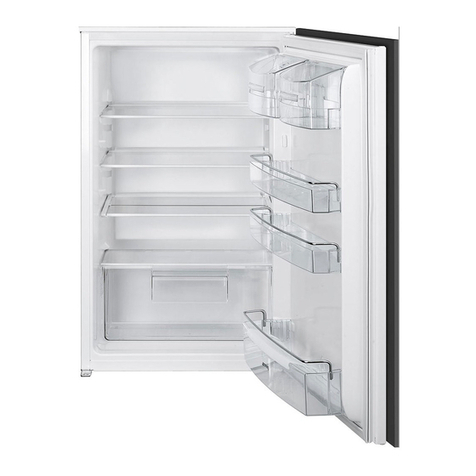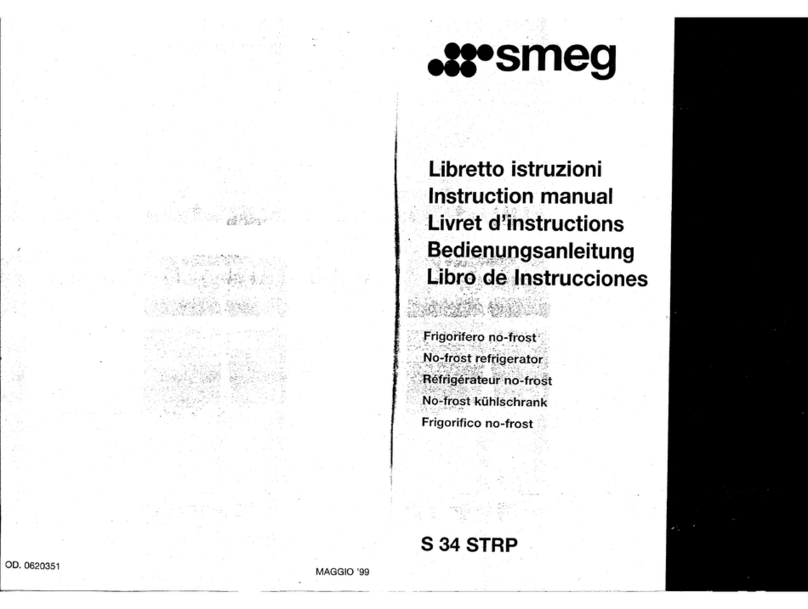Instructions for Use 59
• Ice and frost layer increase energy consumption, so do clean the
appliance as soon as the layer is 3-5 mm thick.
• If the gasket is damaged or if it turns out that the sealing is poor, the
energy consumption is substantially higher. To restore efficiency,
replace the gasket.
• The condenser on the rear wall should be always clean, free of dust
or any impurities.
• Always consider instructions stated in sections Positioning and
Energy Saving Tips, otherwise the energy consumption is
substantially higher.
Important
• If you have bought this appliance to replace an old one equipped with
a lock that cannot be opened from inside (lock, bolt), make sure that
the lock is broken. This will make it impossible for children to lock
themselves inside the appliance and suffocate.
• The appliance must be correctly connected to the mains supply. (see:
Connecting to the Mains Supply).
• Do not touch the cooled surfaces while the appliance operates,
especially not with wet hands, because the skin may stick to the cold
surfaces.
• Do not freeze bottles containing liquid, especially not soft drinks, such
as mineral water, sparkling wine, beer, cola etc., because liquid
expands during freezing and the glass bottle is very likely to blow up.
• Do not eat frozen food (bread, fruit, vegetables), because you can get
frostbites.
• If the food has strange smell or colour, throw it away, because it is
very likely that it is spoiled and therefore dangerous to eat.
• Disconnect the appliance from the power supply before repairing it
(only a qualified technician should repair it), before cleaning and
before replacing the light bulb.
• Use only enclosed tools or tools recommended by the manufacturer.
• For the sake of environment protection - be careful not to damage
the rear wall of the appliance (the condenser unit or the tubes - for
example when moving the appliance) or any part of the refrigerating
system inside the appliance.
• The refrigerating system of the appliance is filled with refrigerant and
oil, so when the appliance is damaged, handle it with care and
dispose it of in compliance with environmental protecting precautions.
(See We Care for the Environment).
• Heating element incorporated in the appliance, all around the rim, is
controlled by the operation of the compressor and it prevents the
door gasket to freeze on to the freezer housing.

